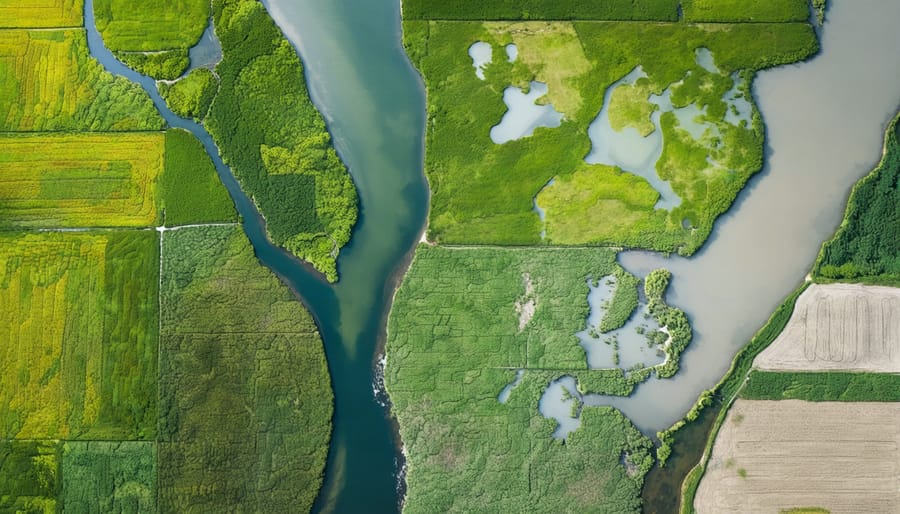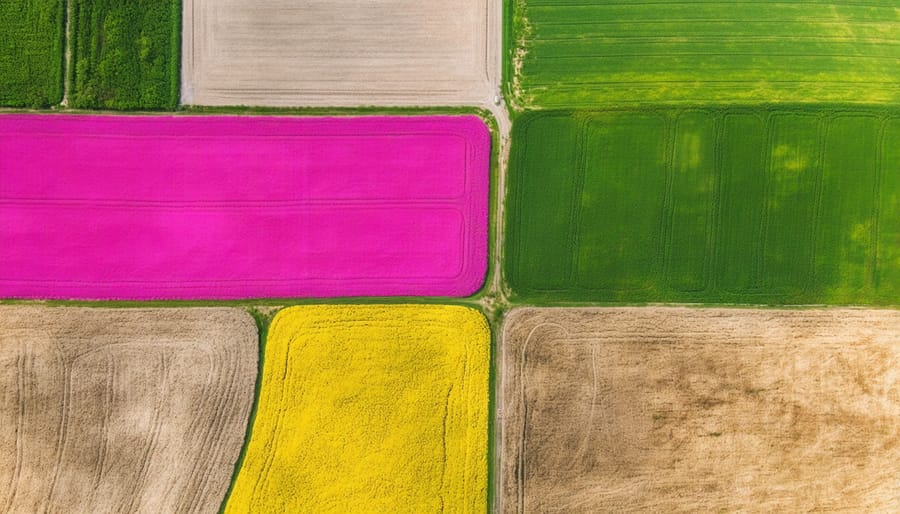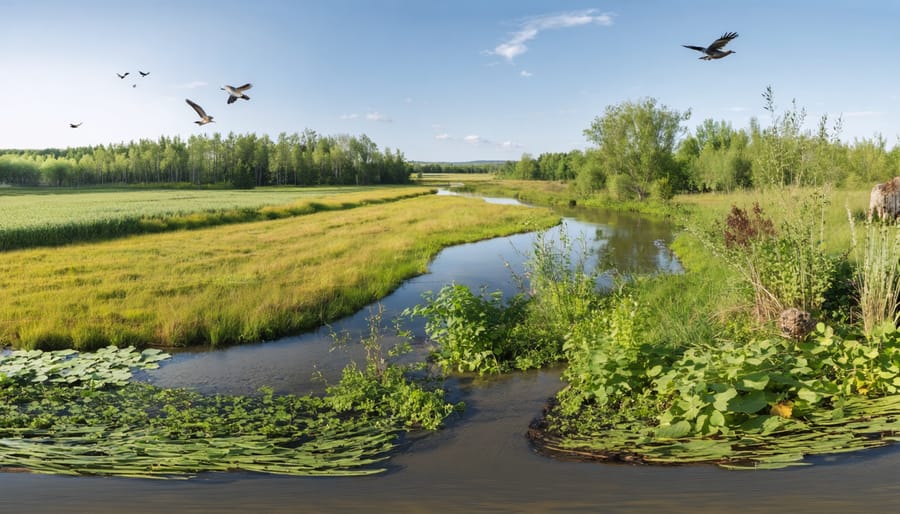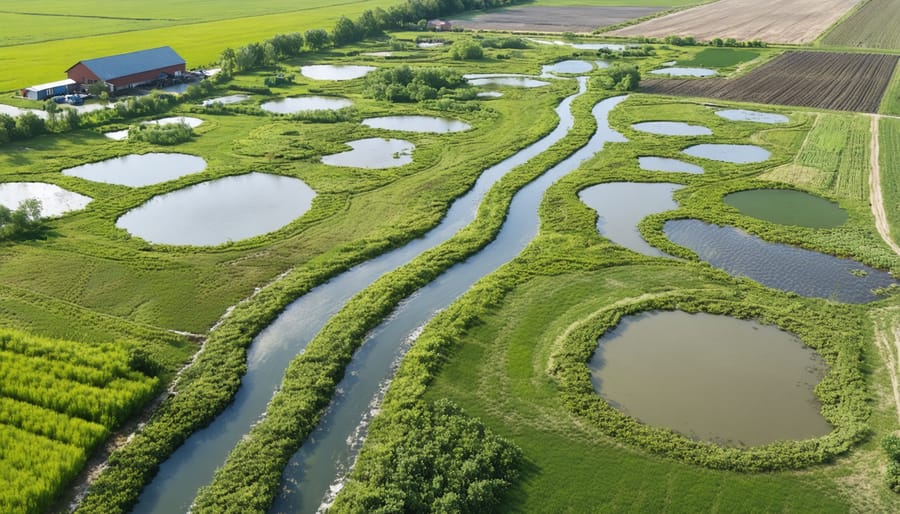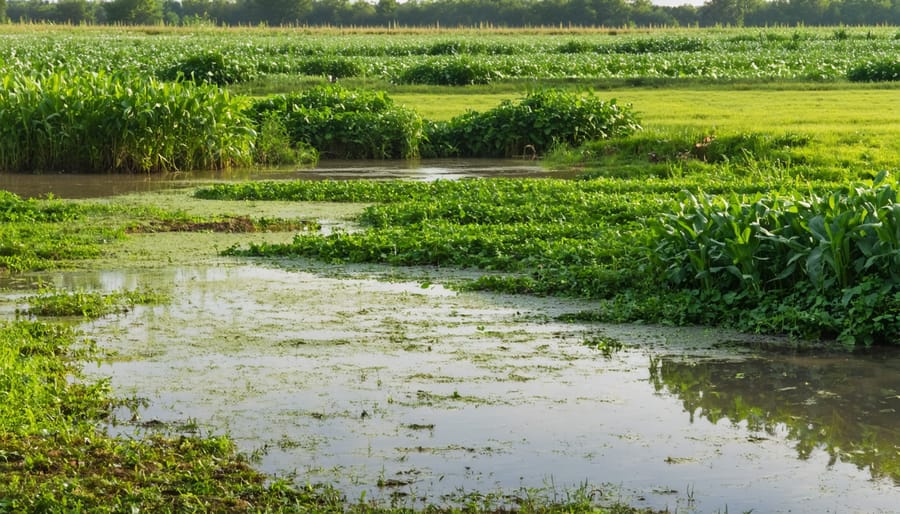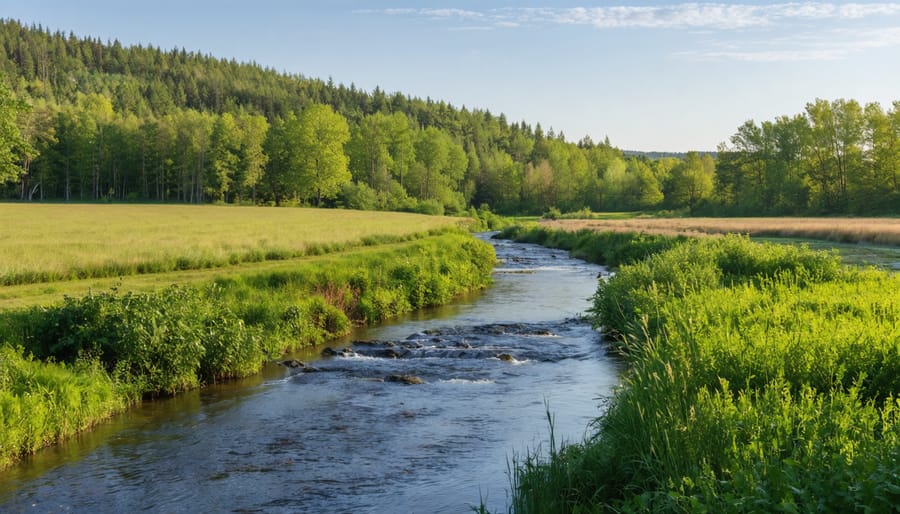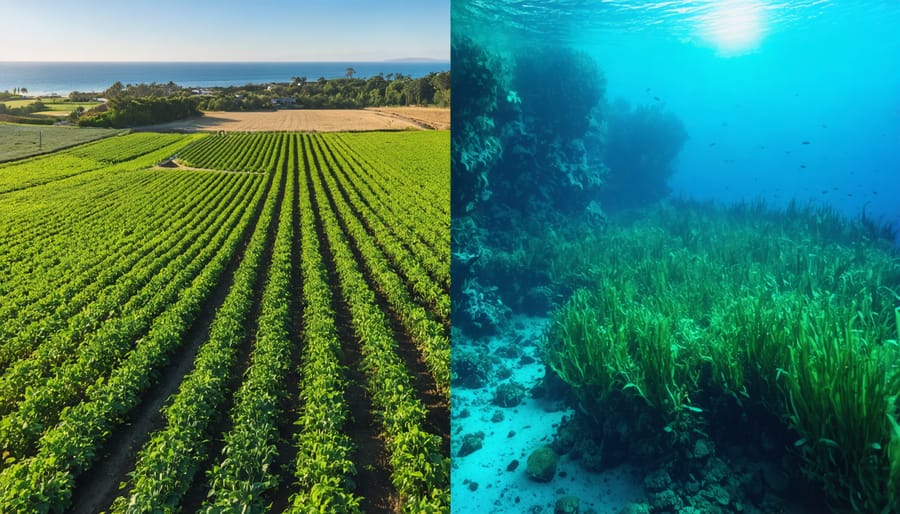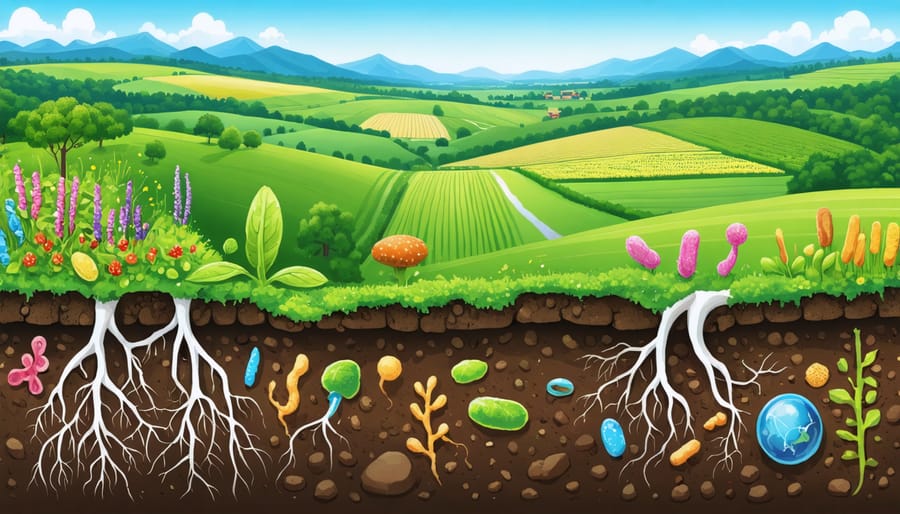Freshwater ecosystems are the lifeblood of Alberta’s agricultural landscape, supporting over 80% of our region’s biodiversity while occupying just 1% of Earth’s surface. From the meandering streams of the Peace River country to the wetlands dotting our prairie provinces, these aquatic networks serve as critical habitat for native species and natural water filtration systems that directly impact crop production and livestock health. For Alberta’s farming community, these ecosystems provide essential irrigation resources worth an estimated $3.6 billion annually, while simultaneously maintaining soil fertility and protecting against flood damage. The intricate web of life within our freshwater systems – from microscopic algae to native fish species – works in harmony to maintain water quality, control agricultural pests, and support pollinator populations that are vital for crop success. As stewards of the land, understanding the biological significance of these waterways isn’t just about conservation – it’s about protecting the natural infrastructure that has sustained our agricultural heritage for generations and will continue to support sustainable farming practices into the future.
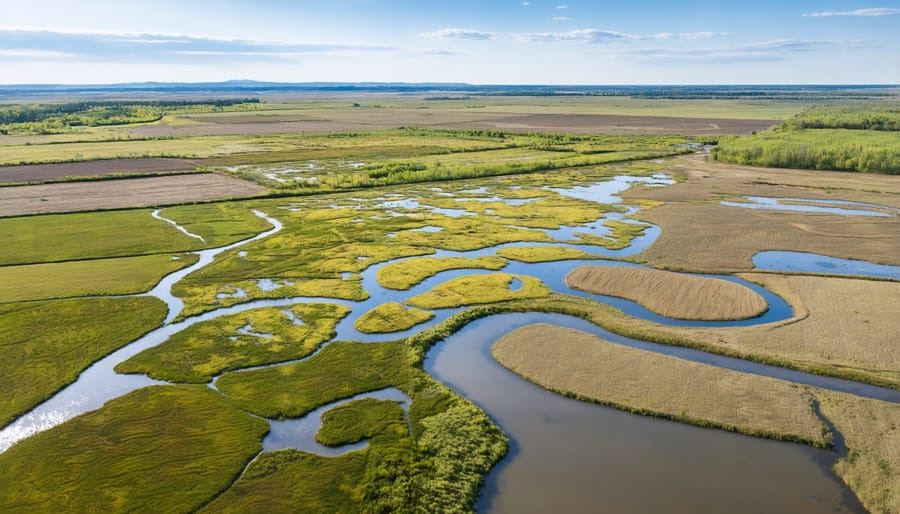
The Living Network of Alberta’s Freshwater Systems
Natural Water Filtration Systems
Freshwater ecosystems serve as nature’s water treatment facilities, providing essential filtration services that benefit agricultural operations across Alberta. Through a complex network of native water plants, microorganisms, and natural processes, these systems effectively remove sediments, excess nutrients, and pollutants from water before it reaches our fields.
In the Prairie regions, wetlands and riparian zones act like giant natural filters. As water moves through these ecosystems, soil particles settle out, while beneficial bacteria break down organic matter. Aquatic plants absorb excess nutrients like nitrogen and phosphorus, preventing these elements from overwhelming downstream water bodies. This natural filtration process is particularly valuable for irrigation, as it reduces the need for costly water treatment infrastructure.
For example, the Bow River watershed demonstrates this process effectively, where natural filtration systems save local farmers thousands of dollars annually in water treatment costs. These ecosystem services are especially crucial during spring runoff when sediment loads are highest. By maintaining healthy freshwater ecosystems on and around farmland, producers can ensure a sustainable supply of clean water for their operations while supporting local biodiversity.

Biodiversity Hotspots
Alberta’s freshwater ecosystems are remarkable hubs of rich biodiversity, supporting an intricate web of life that directly benefits our agricultural landscapes. From the crystal-clear mountain streams to the meandering prairie rivers, these water systems host diverse communities of fish, amphibians, insects, and aquatic plants. Each species plays a vital role in maintaining ecosystem health and agricultural productivity.
Take the Northern Pike in our irrigation channels, for instance. These predatory fish help control pest populations that might otherwise affect crop production. Meanwhile, native aquatic plants like cattails and bulrushes act as natural filters, improving water quality for both wildlife and irrigation purposes.
Particularly noteworthy are our wetland areas, which serve as critical breeding grounds for beneficial insects like dragonflies and damselflies. These insects are natural pest controllers, helping farmers reduce their reliance on chemical interventions. The presence of beavers in these ecosystems creates diverse habitats through their dam-building activities, which help regulate water flow and create deeper pools that benefit both wildlife and agricultural water storage.
Understanding and protecting these biodiversity hotspots isn’t just about conservation – it’s about maintaining the natural systems that support sustainable farming practices across Alberta.
Agricultural Benefits of Healthy Freshwater Ecosystems
Natural Pest Control Services
Freshwater ecosystems serve as nature’s pest control experts, offering invaluable services to Alberta’s agricultural community. Our local wetlands, streams, and ponds host a diverse range of beneficial insects, amphibians, and birds that naturally regulate pest populations affecting crops and livestock.
For instance, dragonflies, which breed in freshwater habitats, are voracious predators of mosquitoes and agricultural pests. A single dragonfly can consume hundreds of mosquitoes daily, helping protect both crops and livestock from these nuisance insects. In the Calgary region, farmers who maintain healthy wetlands on their properties report significantly fewer pest-related issues.
Birds that depend on freshwater ecosystems, such as tree swallows and purple martins, provide additional pest management services. These aerial insectivores can consume thousands of flying insects daily, including many crop-damaging species. According to research from the University of Alberta, farms within 2 kilometres of natural water bodies experience up to 30% fewer pest outbreaks compared to those without nearby water features.
Amphibians like frogs and salamanders also play crucial roles in pest control. These creatures emerge from ponds and wetlands to feed on slugs, caterpillars, and other crop-damaging insects. Many Alberta farmers have found that maintaining small ponds or wetland areas on their properties reduces their reliance on chemical pesticides while supporting these natural pest controllers.
By protecting and restoring freshwater ecosystems, farmers can harness these natural pest control services while contributing to local biodiversity conservation.
Soil Health Enhancement
Freshwater ecosystems play a vital role in maintaining healthy, productive soils across Alberta’s agricultural landscape. When rivers and streams naturally flood, they deposit nutrient-rich sediments that enhance soil fertility and structure. These waterways act as nature’s fertilizer delivery system, carrying essential minerals and organic matter that improve soil quality and crop yields.
Here in Alberta, we’ve seen firsthand how healthy riparian zones – the areas where land and water meet – contribute to soil stability. The root systems of water-loving plants along these zones help prevent erosion while adding organic matter to the soil as they decompose. This natural process builds soil structure and increases its water-holding capacity, particularly beneficial during our dry prairie summers.
Many Alberta farmers have noticed that fields near healthy freshwater systems tend to be more resilient during both wet and dry periods. The soil’s improved structure allows for better water infiltration during heavy rains and helps retain moisture during dry spells. Additionally, these water-influenced soils often show higher levels of beneficial microorganisms, which are essential for nutrient cycling and plant health.
Local agricultural studies have shown that maintaining natural waterways and wetlands on farmland can reduce the need for synthetic fertilizers by up to 30% in adjacent fields, thanks to the natural enrichment processes these ecosystems provide. This not only benefits the soil but also contributes to more sustainable and cost-effective farming practices.
Practical Conservation Strategies for Alberta Farmers
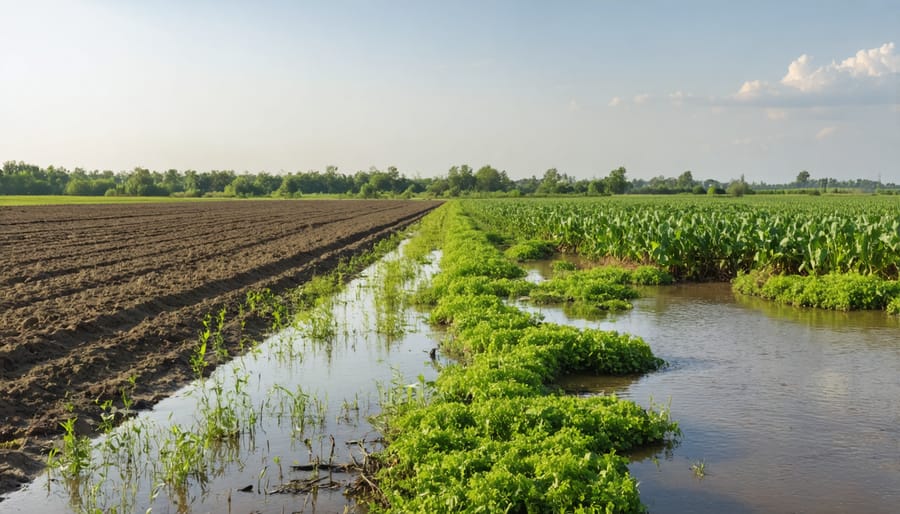
Buffer Zone Management
Creating effective riparian buffer zones along our waterways is crucial for protecting freshwater ecosystems while supporting agricultural productivity. Here in Alberta, we’ve found that a well-planned buffer zone of at least 30 metres provides optimal protection for our water resources.
Start by identifying native vegetation that thrives in your local climate. Plants like willows, dogwood, and native grasses are excellent choices for Alberta’s conditions. These species develop deep root systems that help stabilize banks and filter runoff effectively.
Layer your buffer zone with different types of vegetation: tall trees at the water’s edge, followed by shrubs, and then deep-rooted grasses. This multi-tiered approach maximizes filtration and provides diverse wildlife habitat. For best results, maintain three distinct zones:
Zone 1 (0-5 metres from water): Undisturbed native trees and shrubs
Zone 2 (5-20 metres): Managed woodland or shrubland
Zone 3 (20-30 metres): Grassed filter strip
Regular maintenance is essential. Remove invasive species promptly, and avoid using chemical treatments near the water. Consider rotational grazing in outer zones to maintain vegetation health while providing additional farm income.
Remember to monitor your buffer’s effectiveness by checking for signs of erosion and water quality changes. Many Alberta farmers have reported improved soil retention and increased wildlife presence after implementing proper buffer management strategies. Local conservation authorities can provide specific guidance for your property’s needs and conditions.
Sustainable Water Management Practices
Here in Alberta, we’ve developed effective strategies for managing our precious water resources while supporting both agriculture and natural ecosystems. Our farmers have been leading the way with innovative approaches that benefit both crop production and local watersheds.
Buffer zones along waterways have proven particularly successful, with many producers maintaining natural vegetation strips of 10-30 metres wide. These zones filter runoff, reduce erosion, and provide habitat for beneficial species. Local farmer Jim Thompson from Lethbridge notes, “Since establishing our riparian buffers, we’ve seen improved water quality and increased wildlife activity on our property.”
Precision irrigation systems have revolutionized water conservation in our region. Modern soil moisture sensors and weather monitoring equipment help farmers apply water only when and where it’s needed, reducing usage by up to 30% compared to traditional methods. These systems are particularly valuable during our dry prairie summers.
Regular water quality monitoring has become standard practice, with many farms participating in the Alberta Water Quality Awareness Program. This collaborative effort helps identify potential issues early and ensures our agricultural practices protect downstream ecosystems.
Wetland restoration projects have gained momentum across the province, with many farmers incorporating constructed wetlands into their operations. These features naturally filter water, provide wildlife habitat, and help manage spring runoff. The Southern Alberta Watershed Alliance reports that restored wetlands can remove up to 90% of sediments and nutrients from agricultural runoff.
Creating farm water management plans has become increasingly important, especially given our changing climate patterns. These plans typically include strategies for drought preparation, flood mitigation, and maintaining year-round water quality standards.
As stewards of the land, we’ve seen firsthand how freshwater ecosystems serve as the lifeblood of our agricultural communities here in Alberta. These vital systems do far more than provide irrigation for our crops – they’re complex networks that support biodiversity, maintain soil health, and help regulate our local climate.
Throughout this discussion, we’ve explored how these ecosystems act as natural filters, provide essential habitats for wildlife, and maintain the delicate balance that keeps our farmlands productive. From the smallest pond to our largest watersheds, each body of fresh water plays a crucial role in maintaining the health of our agricultural landscape.
As farmers and agricultural professionals, we have both the responsibility and the opportunity to protect these precious resources. Simple actions like maintaining riparian buffer zones, implementing efficient irrigation systems, and reducing chemical runoff can make a significant difference. Many of our neighbours are already leading the way, showing that productive farming and water conservation can go hand in hand.
Let’s work together to preserve these ecosystems for future generations of farmers. By sharing knowledge, adopting sustainable practices, and supporting local conservation initiatives, we can ensure that our freshwater systems continue to sustain both our agricultural operations and the rich biodiversity that makes Alberta’s landscape unique.
The health of our farms depends on the health of our water. Let’s make every drop count.

